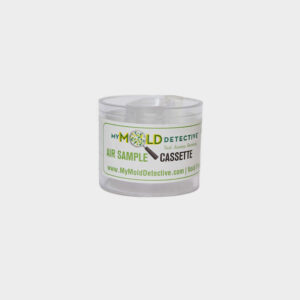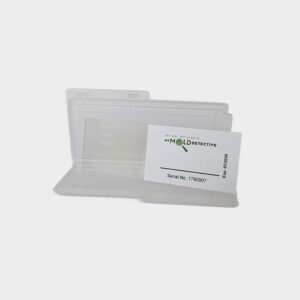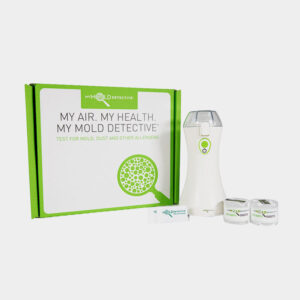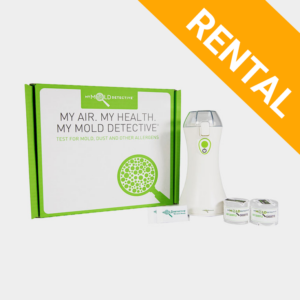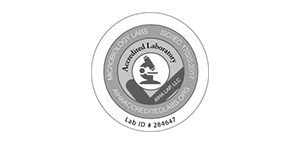
Is Mold in the Indoor Air a Risk to Health?
Is Mold in the Indoor Air a Risk to Health? The answer, as it turns out, is actually complicated, although a lot of research over the last 30 years has helped to clear the picture.
Mold, yeast, mildew, fungi are all names used to talk about the same organisms. For this article we will use “mold” to define the organisms of interest.
First, a few facts and a little history that will help us understand the dimensions of allergic or respiratory reactions in the indoor air.
- One third of people living in the United States present with some sort of allergy.
- Of that 100 million, 20% are allergic to some type / types of mold spores.
- Mold has inhabited the earth for over 900 million years and interacts with every animal, insect, and plant on the planet.
- The average person spends 90% of their time in an indoor environment.
- Due to poor building materials and poorly designed HVAC systems, 100 million people live at risk in 20 million buildings in the United States.
- Prior to 1973 buildings were constructed to “breathe” or exchange air between indoor and outdoor environment. Air indoors can build up high levels of moisture, odors, gases, dust, and other air pollutants. To keep the air safe indoors, fresh outdoor air is needed to dilute these indoor pollutants.
- Due to rising energy costs, buildings from 1973 and forward started being constructed to be breathe less, trying to conserve expensive heated or conditioned air. Buildings became more energy efficient, but also started trapping pollutants indoors.
- Additionally, plaster was discontinued in favor of gypsum board (Drywall) for construction. Drywall is coated with paper (cellulose), one of mold’s favorite food sources. In the outdoors, fungi’s major function is to reduce cellulose to basic organics back into the soil.
- Additionally, mold can use anything organic as a food source. Popular contents in homes and offices on which mold can grow include: carpet, leather furniture, drapes, bedding, clothing, cardboard boxes, accumulated dust, etc. All that is needed is a water source.
- Different types of molds have different water requirements to grow. Some require a lot of water where building materials need to be saturated for long periods of time (i.e. flood, pipe burst, etc.), other types of molds can thrive with much less water and live off of humidity in the air. (i.e., indoor relative humidity of 60% or higher).
What does this boil down to? Normally, airborne mold spores would not be a risk with proper air exchange, but now we’ve given mold a food source in our buildings and with a little water they start to lay down roots, grow, spread and reproduce. This creates an elevated concentration of mold spores that stay trapped in our homes and offices.
What type of fungi is growing in our homes that should concern us?
Carpeting, Drapery and Fabrics
Let’s start with carpeting. Carpet harbors not just fungi but also bacteria, dust mites, parasite protozoans, insects and their eggs and all the allergens that collect in a home. Whenever samples are collected from homes or businesses, Indoor Air Quality (IAQ) Professionals like to find out what is hiding in the deepest recesses of the carpet. Dirt in very fine particles resides at the bottom of each carpet and is very difficult to vacuum. If there is high humidity, it clings to the dirt and fungi and bacteria are attracted to the dirt particles by electrostatic forces. The dirt carries nutrients for the fungi and bacteria giving them the opportunity to create reservoirs of growth. Carpet, therefore allows us to sample for the history of what has been collecting in the building.
When certain fungi and bacteria are recovered from the carpet by the laboratory, they provide an indication of a healthy or at-risk environment. Combined with symptoms of respiratory distress, an IAQ Professional should be able to determine where the problems exist and how to eliminate them. The IAQ Pro will try to assist the property owners/occupants in understanding how to create a healthy living space.
The fungi that are most often found in combination that are responsible for allergies and respiratory distress occur in wet or high humidity indoor environments:
- Alternaria alternata
- Aspergillus fumigatus
- Aspergillus flavus
- Aspergillus versicolor
- Aspergillus ustus
- Aspergillus sydowii
- Eurotium amstelodami
- Chaetomium globosum
- Stachybtorys chartarum
- Penicillium brevicompactum
- Penicillium chrysogenum
- Penicillium crustosum
- Trichodema species
- Ulocladium species
- Wallemia sebi
These fungi are major contributors, but other genera and species can be recovered in minor amounts that add to the problem.
Because each person’s immune response is highly individual , there is no recognized fungi dose response level as of the date of this article. Medical professionals have observed that the longer a person is exposed to an at-risk environment, the more likely an individual may develop an allergy, respiratory distress or related disease.
The same scenarios which exist for carpeting also exist for drapery and fabrics.
Furniture & Storage Boxes
Aspergillus and Penicillium species have an affinity for leather and cardboard. When these materials get wet or are exposed to prolonged periods with high humidity, both will provide a good growth medium for the species in these genera.
Water and Bacteria
Bacteria reside in the freshwater systems of buildings. Each plumbing system has “elbows” where water sits until the system is turned on again. Unfiltered fresh water will contain gram negative/ oxidase positive bacteria. These most common are Pseudomonas and related species and Legionella species. These bacteria will accumulate in shower heads and multiply in a slime layer in most homes and businesses that have showers. These gram negatives contain endotoxin on the cell walls. This toxin is breathed in every time we shower. Endotoxins reduce the white cell immune response and leave us open to the toxins produced by the above-named fungi. In addition, some pathogens such as Pseudomonas aeruginosa and Legionella pneumophila can cause respiratory distress.
What can we do to help protect ourselves, family, friends and pets?
Tips for Mitigating Naturally Occurring Organisms in Homes & Offices
Allergy Sufferers
If you are having a difficult time sleeping, put in an air cleaner in your bedroom that is a true High Efficiency Particulate Air (HEPA) filter.
Children & Pets
Children may Exhibit Symptom Earlier Than Adults. for those who have young children or pets, remember they live on the floors. If they are demonstrating irritations, you have allergens in the carpet. Consider removing the carpet.
Carpets
Reduce carpeting as much as possible and keep wood floors washed and clean. If carpets cannot be removed, vacuum often and shampoo at least once a month, more if needed.
Drapery, Fabrics
Change or wash on a regular basis.
Carboard Boxes
Replace cardboard boxes with plastic boxes that have covers.
HVAC
Make sure the filter size is correct and it should be no less than MERV 10. Change filters every season, more often if the home has multiple animals.
Water leaks
Fix as soon as possible and evaluate damage to wallboard and replace as needed.
Basements
Have a dehumidifier that runs all year and is set for RH 40-50%
Cooling & Humidity
Air conditioning will not reduce 1 degree until the humidity is reduced. Save energy. Set dehumidifiers in living areas for RH 40-50%. Organisms grow at higher humidities and under 30% mucous membranes will dry out and present with the same symptoms as an allergy.
Showerheads
Detach and clean thoroughly, especially if there is slime build up. Consider attaching a filter or a whole house filter to keep bacterial levels low.
All the best. Be healthy.
Richard Billups
Microbiology Manager
Air Care Laboratories
Take control of your indoor air quality today with My Mold Detective! Don’t let mold compromise your health and home any longer. Click here to uncover the invisible threats lurking in your air and breathe easy again. Your clean and healthy living space is just a click away – Act now!
-
Add-Ons
Additional Air Cassette
-
Add-Ons
Additional Tape Lift
-
Kit
Mold Test Kit
